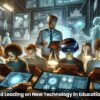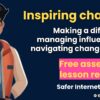
Yesterday I had the privilege of meeting Andrew Curran who delivered a two hour session on the brain and the lessons we can learn from neuroscience to inform our practice in the classroom. In this post, I wouldn’t dream of trying to replicate his vast knowledge, but thought I’d share some takeaways that might inform what you do. Please note, I’m not an expert, and this is my interpretation of what he said.
- most creative people have aspergers
- some studies have shown that student to student instruction is 33% more successful than adult to student
- 25 is the optimal age for understanding
- in an argument most adults revert to a childlike state – best to step back, take a deep breath and wait until brain reverts to ordinary behaviour
- children learn best in an environment where they feel safe, valued, relaxed and loved
- stress is a poor environment for learning
- dopamine gets the brain firing and seratonin calms it down to strike a balance
- drugs of addiction work by flooding the brain with dopamine
- olfactory memories (ones associated with smell) are the ones that are held most deeply
- 15 minute bursts are best for learning
- the teenage brain is not best built for learning straight facts due to its neurochemistry
- why not try the AQ test for the autistic spectrum by visiting http://archive.wired.com/wired/archive/9.12/aqtest.html
Thanks again to Andrew for a really interesting and thought provoking session. You can find out more about him via his website: http://www.andrewcurran.net/















Thanks for posting this, Mark. The first item on the list, about Aspergers, is fairly provocative. Had you heard that one before? Do you happen to know if Andrew posted the presentation anywhere? I don’t see it on his site. I’d love to dive deeper. Thanks again!
Hi Sheri
Unfortunately, although great for us, Andrew’s presentation was delivered by working with various images of the brain which he talked to and annotated through his entire presentation. There were no notes. He delivered straight from his own clearly immense brain. From what I understand, much of what he covered is in his book, “The Little Book of Big Stuff about the Brain: The True Story of Your Amazing Brain“.
I need to read it myself!!
Thanks for taking the time to comment.
Best wishes,
Mark